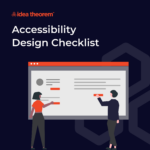Development & Engineering
App Development in 2025: Trends, Technologies & Strategies for Success
27 OCT 2025
7 mins read


App development in 2025 is evolving faster than ever, driven by rapid technological advancements, shifting user expectations, and the expanding role of AI and automation. For developers, entrepreneurs, and businesses, staying ahead means understanding what’s next — from emerging frameworks to design trends, platform preferences, and security demands.
In this article, we’ll break down what to expect in app development in 2025 and how to future-proof your digital products.
Why App Development Still Matters in 2025
The mobile and web application market continues to grow exponentially. As of 2025, over 7.5 billion people globally use smartphones, and digital-first experiences are no longer optional — they’re expected.
Key drivers include:
- Remote work and hybrid lifestyles demanding better productivity and collaboration tools.
- Consumer behavior shifting toward mobile commerce, AI-driven personalization, and instant access to services.
- Enterprise digitization and SaaS adoption across all sectors.
In short, apps are not just tools—they’re ecosystems and growth engines.
Key Trends in App Development in 2025
1. Rise of AI-First Applications
AI integration isn’t new, but 2025 marks a shift toward AI-first development. Apps are now expected to:
- Predict user needs
- Personalize experiences in real time
- Automate routine tasks
- Provide intelligent, conversational interfaces
Tools like OpenAI’s APIs and Google’s Gemini are reshaping how apps are designed and function.
2. Cross-Platform Development Becomes Standard
Frameworks like Flutter, React Native, and Kotlin Multiplatform continue to dominate. Developers and companies are prioritizing:
- Faster time to market
- Codebase efficiency
- Consistency across iOS, Android, and web
Expect to see further convergence between mobile and web applications through Progressive Web Apps (PWAs) and unified code strategies.
3. Voice and Conversational Interfaces
With the integration of AI assistants, voice-based interactions are becoming native. In 2025:
- Voice UI is essential in accessibility-first design.
- Chatbots and AI agents are core features, not add-ons.
- Apps now “talk back” and understand natural language better than ever before.
4. Privacy and Security at the Forefront
Data privacy is a defining factor for app success. Compliance with GDPR, CCPA, and emerging AI governance laws is non-negotiable. In 2025, apps must:
- Implement zero-trust architecture
- Support end-to-end encryption
- Offer transparent data permissions and privacy dashboards
5. 5G and Edge Computing
The impact of 5G and edge computing is transforming how apps perform:
- Ultra-low latency enables real-time features like AR/VR, live collaboration, and streaming.
- Edge computing supports faster processing and offline capabilities, especially in IoT-connected apps.
Top Technologies Powering App Development in 2025
AI & ML Development Platforms
- TensorFlow Lite, Hugging Face, and OpenAI APIs
- Low-code AI model training and deployment
- In-app decision-making via on-device AI
Cloud-Native App Development
- Serverless architectures using AWS Lambda, Google Cloud Run, and Azure Functions
- Scalable microservices for global applications
Blockchain Integration
Apps in fintech, healthcare, and logistics are leveraging blockchain for:
- Data integrity
- Smart contracts
- Identity management
AR/VR and Spatial Computing
Immersive experiences are no longer limited to gaming:
- Retail apps offer virtual try-ons
- Real estate uses AR-powered tours
- Education apps adopt spatial learning environments
App Design & UX Best Practices in 2025
Accessibility and Inclusivity
Regulatory pressure and user demand are pushing developers to:
- Meet WCAG 2.2 accessibility standards
- Include adaptive interfaces and voice navigation
- Design for neurodivergent users and multiple device sizes
Micro-Interactions and Motion Design
To create more intuitive user experiences, apps now incorporate:
- Subtle animations
- Haptic feedback
- Gesture-based controls
Minimalism and Dark Mode
Clean UI and energy-saving themes are not just trends—they’re now best practices. Dark mode support is expected by default in most apps.
Monetization Models That Work in 2025
Freemium + Premium
- Offer basic functionality free, with premium tiers unlocking advanced features.
- AI-driven upsells improve conversion rates.
Subscription-Based Apps
SaaS models are dominating:
- Monthly and annual billing
- Bundled services (e.g., fitness + nutrition coaching in one app)
In-App Purchases & Microtransactions
Still popular in gaming and media apps, but with stricter regulations on transparency and user consent.
How to Succeed in App Development in 2025
1. Start with User Intent
Success begins with understanding your users’ needs, not just building features. Use data, interviews, and journey mapping.
2. Embrace Agile and DevOps
Continuous delivery, automated testing, and real-time analytics are essential for modern app teams.
3. Prioritize Performance and Offline Capabilities
- Speed is UX.
- Apps must function well even with intermittent connectivity.
4. Build for Scalability
Think beyond your MVP. Use cloud infrastructure and modular architecture to prepare for growth.
5. Test for Real-World Scenarios
Include network variations, multiple device types, and accessibility in your QA process.
Conclusion: The Future Is App-Centric
App development in 2025 is more dynamic, intelligent, and user-focused than ever before. Success requires not just technical skill, but a deep understanding of user behavior, platform capabilities, and ethical responsibility. Whether you’re a startup founder, enterprise leader, or solo developer — staying updated, agile, and user-first is the only way to thrive in this fast-moving ecosystem.





